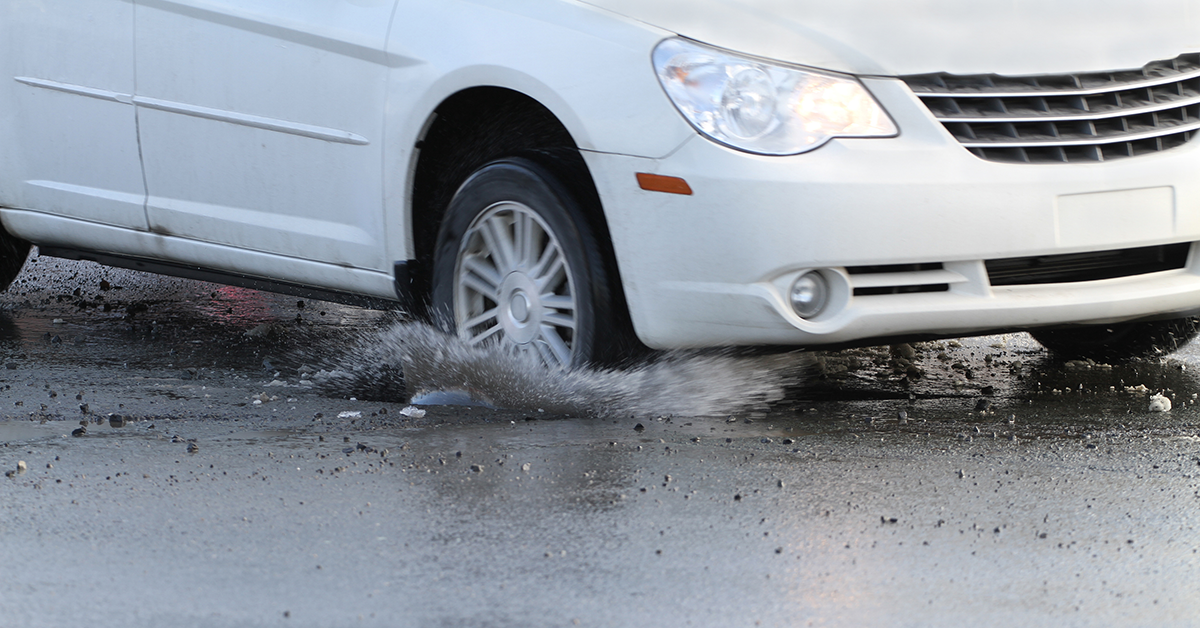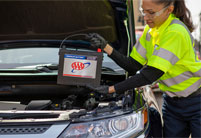Cost of pothole repairs hitting wallets even harder
Cost of pothole repairs hitting wallets even harder

Buckle up, because pothole season is here in Western and Central New York, and it's ready to wreak havoc on your car and your wallet.
You know the scenario: You're cruising down the road, enjoying the scenery, when BAM! Your vehicle hits a hidden pothole, sending a jolt through your entire body and possibly damaging your car.
But why do these craters suddenly appear? Blame the harsh winter weather. As temperatures fluctuate, moisture seeps into cracks in the pavement, causing it to expand and contract like a stubborn spring. This constant freeze-thaw cycle weakens the pavement, making it vulnerable to the weight of passing vehicles – and that's the recipe for a pothole disaster.
Potholes can cause serious damage on a vehicle’s tires, alignment, suspension, and shocks
Every month, AAA responds to thousands of tire-related calls across Western and Central New York. Nationally, AAA responds to millions every winter and spring. While AAA does not track Roadside Assistance requests specifically related to pothole damage, it’s obvious that many calls this time of year are the result of vehicles hitting potholes. Tire calls typically account for 10 to 14% of AAA road service requests each month.
Last year, a AAA survey found nearly 2 in 10 drivers had to get their vehicle repaired after hitting a pothole. Researchers estimated that pothole damage was up 57% nationally.
The average vehicle repair cost for pothole damage in 2022 was $406. With automotive repair costs on the rise, potholes are even more painful this year. Some drivers ended up with an average of two pothole-related repairs signaling that America’s roadways need immediate attention. AAA urges government officials and departments of transportation to focus on improving road conditions, prioritizing areas most in need of repair.
How to save your car and your wallet from pothole damage
- Check your tires – this includes tread depth, tire pressure, suspension, and alignment.
- Tread depth – insert a quarter into the tread groove with Washington’s head upside down. If you can see the top of Washington’s head, start shopping for new tires.
- Tire pressure – check this at least once a month before driving when the tires have been at rest and are not hot. Follow the vehicle manufacturer’s recommended inflation pressure found on a sticker inside the driver’s side door.
- Suspension and alignment – look for changes in vehicle handling, excessive vibration or uneven wearing of tires, all indications of a problem with the suspension like alignment or shocks.
Keep your eyes on the road
- Scan the road ahead for potholes and if it’s safe to do so, drive around any in your path.
- Standing water or puddles may disguise a deep pothole. Avoid driving through standing water when possible but if you can’t, drive through slowly.
- If you can’t avoid a pothole, reduce your speed safely and avoid braking abruptly, particularly as you go over the pothole. Striking a pothole at higher speeds increases the chance of knocking the wheels out of alignment, affecting the steering, and bending or even breaking suspension components.
If you hit a pothole, pay attention to any new or unusual noises or vibrations. If you detect something is off with your vehicle, take it to a AAA Approved Auto Repair facility for a full vehicle inspection as soon as possible.












